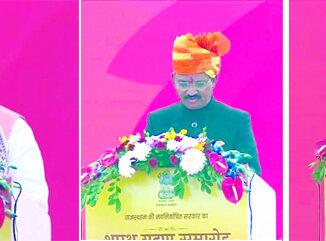
The period between August 15, 2022, and August 15, 2023, has been characterized by a complex interplay of achievements and challenges for India. The flip side reflects the nation’s resilience, progress, and global influence in various spheres, including the economy, technology, renewable energy, and diplomacy. Despite the ongoing global challenges stemming from the COVID-19 pandemic, India’s economy showcased resilience and recovery. The GDP growth rebounded, fueled by increased industrial production and a revival in consumer spending. The government’s focus on self-reliance through initiatives like ‘Make in India‘ contributed to the growth of domestic industries. India’s digital transformation continued at an impressive pace. The adoption of digital technologies across sectors led to increased efficiency and improved access to services. The expansion of digital payment systems, e-governance initiatives, and the proliferation of technology startups further cemented India’s status as a technology hub. India made significant strides in its commitment to renewable energy. The country witnessed the installation of large-scale solar and wind energy projects, contributing to its goals of reducing carbon emissions and increasing energy sustainability. India’s space agency, ISRO, achieved remarkable milestones during this period. The successful launch of advanced satellites for communication, navigation, and earth observation bolstered India’s reputation as a space-faring nation. India continued to strengthen its diplomatic ties with various nations. High-level visits, collaborations, and strategic partnerships showcased India’s role in global affairs. The successful hosting of international events like the BRICS Summit highlighted the country’s leadership on the world stage.
However, the flop side highlights the need for ongoing efforts to strengthen public health infrastructure, control inflation, address environmental concerns, ensure inclusive education, and tackle social inequalities. While India’s response to the pandemic improved since the devastating second wave, gaps in the public health infrastructure remain. The need for better healthcare facilities, improved access to medical resources, and a robust healthcare system became more evident during the ongoing battle against COVID-19. Rising inflation posed challenges for India’s citizens, affecting the cost of basic goods and services. Addressing inflation and stabilizing the cost of living became critical to ensure economic stability and protect the purchasing power of the population. Despite strides in renewable energy, environmental challenges persist. Air quality concerns, water scarcity issues, and deforestation demand a comprehensive approach to environmental conservation and sustainable development. The pandemic continued to disrupt education, with uneven access to online learning and the digital divide affecting students’ educational experiences. Bridging this gap and ensuring quality education for all emerged as a priority. The year highlighted persisting social inequalities, including income disparities and unequal access to opportunities. Addressing these inequalities requires a multi-faceted approach that encompasses economic policies, social programs, and inclusive development strategies.
As India continues its journey, it must harness its successes while simultaneously addressing its challenges. Strategic policies, innovative solutions, and a collective commitment to progress will be crucial in ensuring that the flip side remains dominant and the flop side transforms into opportunities for growth. By acknowledging both sides and working towards a balanced and holistic development approach, India can continue to rise as a vibrant and dynamic nation on the global stage.





Be the first to comment